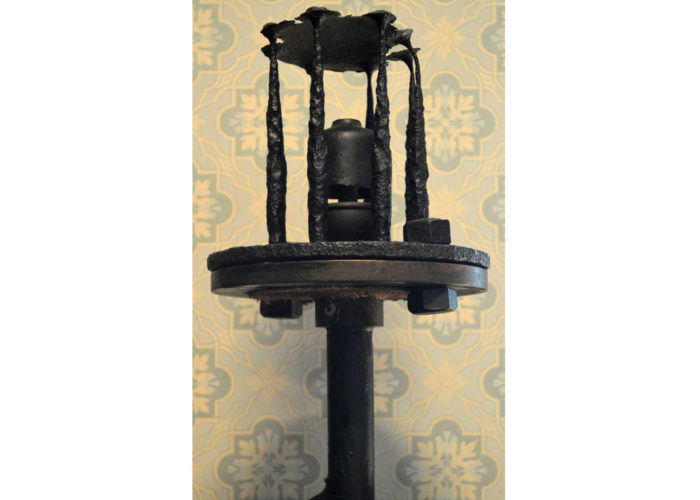Steam Whistle
Theme: The impact of industry, Economic and technological revolution, Medicine, science and the people, Trade, tariffs and taxes
The steam engine was one of the most important technologies of the industrial revolution. But it could be dangerous. The invention of the steam whistle made steam power much safer, saving countless lives as steam technology developed and grew through the 1800s.
Developments and refinements to the steam engine’s basic design transformed transport and industry in the 1800s. It powered trains, ships and new automated machines in mines, mills and farms. It also revolutionised communications, powering the industrial printing press. Industry no longer needed to rely on water and wind power, and factories could be built anywhere in the country. People and goods could travel further and faster than ever before.
But steam engines could be dangerous. If the water level in the engine’s boiler became too low, pressure built and the boiler could explode. This is what killed a train driver on the world’s first steam powered passenger railway – the Stockton and Darlington Railway – in 1828, and 20 people on the dockside and aboard the passenger steamboat Union when it exploded in the Humber Dock at Hull in June 1837. When a boiler explosion led to the death of several men working at the Dowlais Ironworks near Merthyr Tydfil, the manager sent for chief engineer Adrian Stephens, to see whether something could be done to prevent further tragedy.
The result was the steam whistle – an alarm, which would alert the stoker that it was time to refill the boiler. Adrian Stephens had lengths of organ piping sent from London. He fixed a whistle to the top and fed the pipe part way down into the water boiler. When the water level fell below the pipe end, steam was forced up the tube and set off the whistle. Adrian Stephen’s simple but effective steam whistle was added to industrial boilers, railway locomotives and steam ships around the world. They also went on to be used to mark the end of shifts in factories and mines, as fire alarms, to signal the approach of ships and trains and as a fog signal for lighthouses.
Did you know..?
Despite its enormous success, Adrian Stephens never fully benefitted from his invention. In a letter to his niece years late he wrote: “neither in want, nor caring for money at the time, I did not think of taking a patent”.
Use our Classroom resources to investigate this object and the Industrial Revolution further.
Highlights:
- Using objects, artworks and other sources to find out about the past
- Introducing the Age of Revolution
- How to make a revolutionary stop-frame animation
- Mystery objects
And much more…
Sources & acknowledgements
This object description and its related educational resources were researched and written by our team of historians and education specialists. For further information see the item’s home museum, gallery or archive, listed above.
- Related resources
-
Education overview
You can access a range of teachers resources related to this object and more on our education page.
Please also see our glossary of terms for more detailed explanations of the terms used.
-
Curatorial info
- Originating Museum: Cyfarthfa Castle Museum & Art Gallery
- Production Date: 1833
- Original record
-
Use this image
You can download this image for personal and educational use but please take note of the license type and rights holder information.
- Rights Holder: © Cyfarthfa Castle Museum & Art Gallery 2018
- License Type:
Find it here
This object is in the collection of Cyfarthfa Castle Museum and Art Gallery



